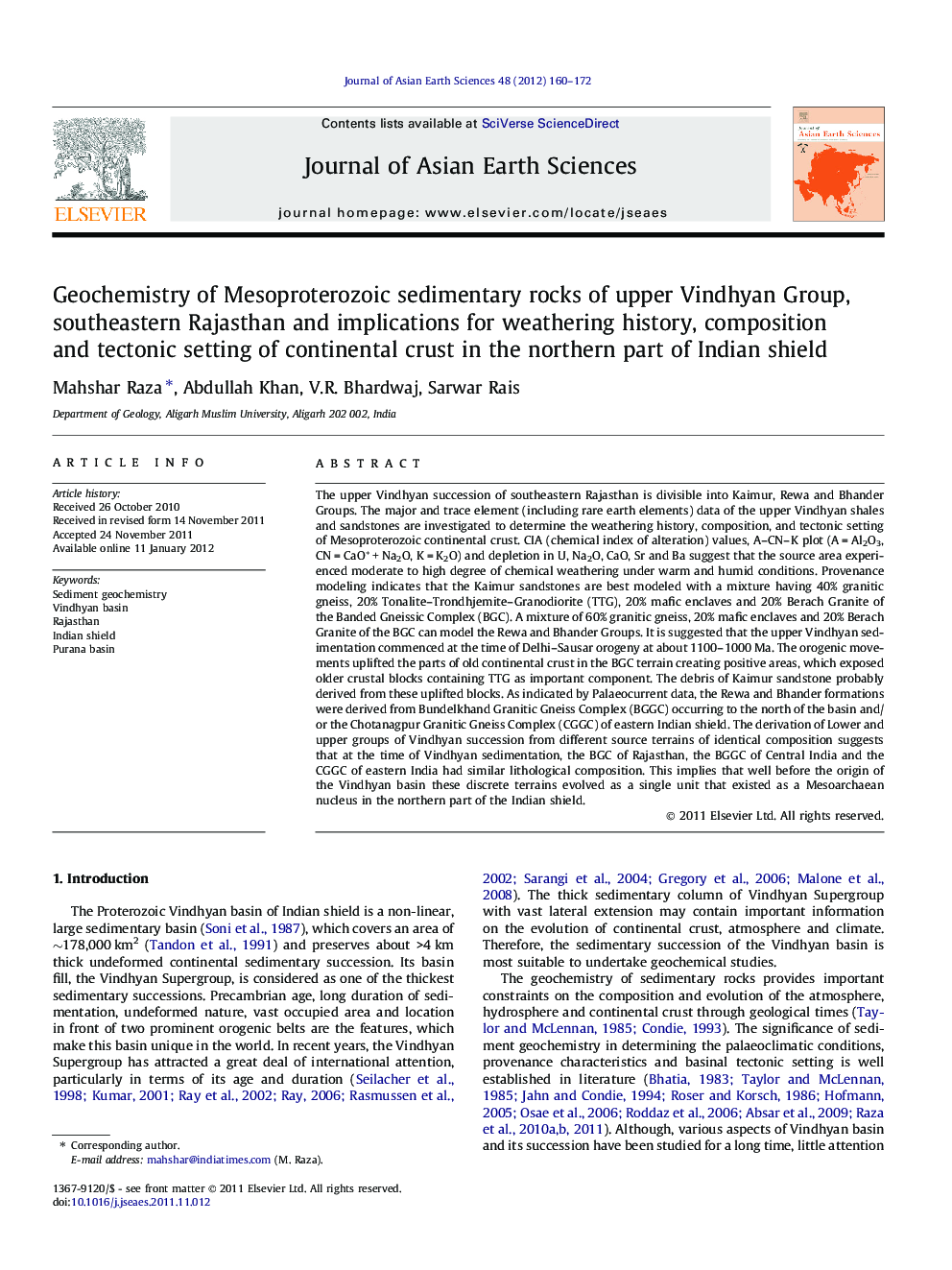| کد مقاله | کد نشریه | سال انتشار | مقاله انگلیسی | نسخه تمام متن |
|---|---|---|---|---|
| 4731590 | 1640416 | 2012 | 13 صفحه PDF | دانلود رایگان |

The upper Vindhyan succession of southeastern Rajasthan is divisible into Kaimur, Rewa and Bhander Groups. The major and trace element (including rare earth elements) data of the upper Vindhyan shales and sandstones are investigated to determine the weathering history, composition, and tectonic setting of Mesoproterozoic continental crust. CIA (chemical index of alteration) values, A–CN–K plot (A = Al2O3, CN = CaO* + Na2O, K = K2O) and depletion in U, Na2O, CaO, Sr and Ba suggest that the source area experienced moderate to high degree of chemical weathering under warm and humid conditions. Provenance modeling indicates that the Kaimur sandstones are best modeled with a mixture having 40% granitic gneiss, 20% Tonalite–Trondhjemite–Granodiorite (TTG), 20% mafic enclaves and 20% Berach Granite of the Banded Gneissic Complex (BGC). A mixture of 60% granitic gneiss, 20% mafic enclaves and 20% Berach Granite of the BGC can model the Rewa and Bhander Groups. It is suggested that the upper Vindhyan sedimentation commenced at the time of Delhi–Sausar orogeny at about 1100–1000 Ma. The orogenic movements uplifted the parts of old continental crust in the BGC terrain creating positive areas, which exposed older crustal blocks containing TTG as important component. The debris of Kaimur sandstone probably derived from these uplifted blocks. As indicated by Palaeocurrent data, the Rewa and Bhander formations were derived from Bundelkhand Granitic Gneiss Complex (BGGC) occurring to the north of the basin and/or the Chotanagpur Granitic Gneiss Complex (CGGC) of eastern Indian shield. The derivation of Lower and upper groups of Vindhyan succession from different source terrains of identical composition suggests that at the time of Vindhyan sedimentation, the BGC of Rajasthan, the BGGC of Central India and the CGGC of eastern India had similar lithological composition. This implies that well before the origin of the Vindhyan basin these discrete terrains evolved as a single unit that existed as a Mesoarchaean nucleus in the northern part of the Indian shield.
► Provenance experienced high chemical weathering under warm and humid conditions.
► Lower part derived from a mixture 40% Gneiss:20% TTG:20% Mafics:20% Granite.
► Upper part derived from a mixture 60% Gneiss:20% Mafics:20% Granite.
► Gneissic complexes of north Indian shield evolved as single Mesoarchaean nucleus.
Journal: Journal of Asian Earth Sciences - Volume 48, 2 April 2012, Pages 160–172